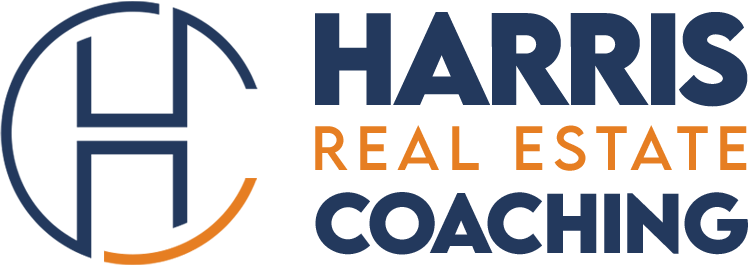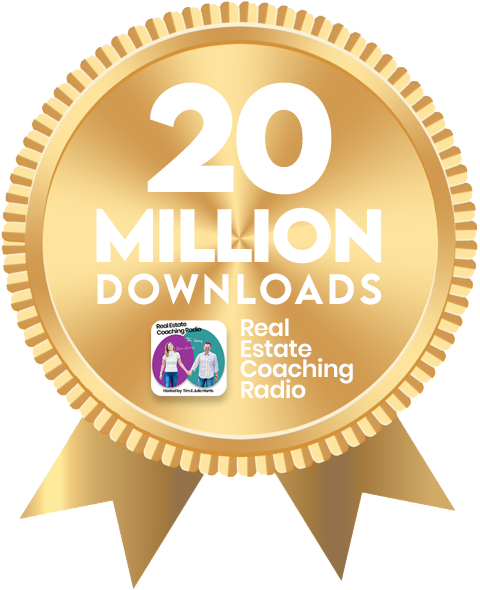Welcome back to America’s #1 Daily Podcast, featuring America’s #1 Real Estate Coaches and Top EXP Realty Sponsors in the World, Tim and Julie Harris. Ready to become an EXP Realty Agent and join Tim and Julie Harris? Visit: https://whylibertas.com/harris or text Tim directly at 512-758-0206.
IMPORTANT: Join #1 Real Estate Coaches Tim and Julie Harris’s Premier Coaching now for FREE. Included is a DAILY Coaching Session with a HARRIS Certified Coach. Proven and tested lead generation, systems, and scripts designed for this market. Instant FREE Access Now: YES, Enroll Me NOW In Premier Coaching https://premiercoaching.com
3 Ways to Overcome Higher Interest Rate Mortgages
How do you overcome the #1 buyer objection these days?
“I don’t want to pay these high interest rates and high mortgage payments! I’m going to wait for the rates to come down.”
They don’t have to wait; they just have to utilize a different type of mortgage.
There are several ways to overcome higher rates. We’ll show you the top three: Buy-Downs, Paying Discount Points, and Adjustable-Rate Mortgages (ARMs).
This information is not just for buyer’s agents; it’s also for listing agents to understand how these programs work.
HUGE Announcement: You will love this! Looking for the full outline from today’s presentation? Our DAILY Newsletter featured lead generation systems, real estate scripts, daily success plans and (YES) the notes or today’s show. Best part? The newsletter is free! https://harrisrealestatedaily.com/
Remember: just because a buyer asks for closing costs or is getting a mortgage that’s not a standard, 30-year fixed does not automatically make them a risky buyer! Maybe they’re just getting a lower rate, so they have lower payments.
Note: Credit scores are at an all-time high nationwide. Home equity (this translates for sellers who are also buyers turning their equity into their down payment) is at an all-time high. 30-, 60-, and 90-day late payments are at an all-time low.
This means that most buyers are in a STRONG position to buy and are likely just taking advantage of different types of loan products versus choosing an inferior loan product, as some listing agents believe.
REAL ESTATE LEADS, LEADS and more LEADS: Question: What is Tim and Julie Harris’s favorite PROBATE LEAD PROVIDER? Simple, alltheleads.com/harris
Listing agents: do your research before you shoot down a buyer just because you’ve never heard of their loan program or because you believe that ARMs are evil and have a terrible reputation!
Buy Downs
A ‘BuyDown’ mortgage is one in which the buyer obtains a lower interest rate for at least the first few years of the loan.
There are different types of buydowns. A 2-1 buydown gives the buyer a lower rate for the first two years of the loan, while a 3-1 buydown gives the buyer a lower rate for the first three years of the loan.
The buy-down fee (points) can be paid by the seller on behalf of the buyer or by the buyer themselves. When a buyer asks for closing costs to be paid by the seller, this is where the money can go.
Ready to become an EXPIRED Listing Agent? As promised, here is the discount link for the EXPIRED LISTING LEADS: https://www.redx.com/affiliate/tim-and-julie-harris/
Builders routinely utilize this type of financing, which is why closing on a new construction home is likely to have a lower interest rate and, thus, a lower payment.
Since builders ‘subsidize’ lower mortgage interest rates, a buyer might have the same payment on a higher-priced home using builder financing as they would using a typical, 30-year fixed rate (at the going rate) on a resale home.
Whether a home builder or a resale seller is subsidizing the rate buydown, typically, the price is raised to compensate.
Let’s take a couple of examples:
3-2-1 Buy-down
In a 3-2-1 buy-down, the buyer has lower payments for the first three years. For each of those first three years, their interest rate goes up by 1% annually. The full interest rate then applies beginning on the fourth year of the loan. They can, however, re-finance or sell the home at any time.
2-1 Buy-down
In the 2-1 buy down, the discount is applied for the first two years, providing a 2% lower interest rate for the first year, then a 1% rate discount for the second year, and then on the third year, it adjusts to the actual rate.
The buyer, on their own behalf, or the seller or builder, pays the lender for the subsidy. This is paid at closing.
Lower rates make it easier for buyers to qualify and enjoy lower payments for the first couple to a few years of the loan. This makes sense, especially for buyers who expect their incomes to rise or who will add a spouse’s income in the next few years.
Let’s do the math:
Here are some examples of how a buy-down mortgage can work. Say you’re borrowing $250,000 with a 30-year fixed-rate loan at 6.75%. You can choose between a 2-1 buy-down or a 3-2-1 buy-down.
Here’s what the loan breakdown would look like with a 2-1 buy-down option:
- Year 1: $1,304 at 4.75% interest
- Year 2: $1,459 at 5.75% interest
- Year 3: $1,622 at full 6.75% interest
The buy-down fee for this loan would be $5,759. Now, say you choose the 3-2-1 buy-down instead. Here’s what your loan payments would look like:
- Year 1: $1,158 at 3.75% interest
- Year 2: $1,304 at 4.75% interest
- Year 3: $1,459 at 5.75% interest
- Year 4: $1,622 at full 6.75% interest
Meanwhile, the buy-down fee for this loan increases to $11,324. So, if a buyer is considering a buy-down, they should look beyond the initial low payment period to determine whether the costs involved in the near term are worth any interest savings they would potentially realize.
Note: not all types of loans or all types of homes can be purchased using a buy-down. FHA and USDA loans have additional requirements, and you should always monitor for pre-payment penalties.
So what if a buyer wants to lock in a lower rate for a longer period of time or for the life of the loan?
Paying Discount Points up front.
A buyer can choose to pay the lender up front (at closing) for ‘discount points’.
What’s a discount point?
Discount points are prepaid interest that the borrower can purchase to lower their rate on subsequent monthly payments. They are a one-time fee, paid upfront during either a normal purchase or later if the borrower refinances.
Each discount point costs 1% of the total loan amount (not the purchase price) and lowers the loan’s interest rate by one-eighth to one-quarter of a percent. Check with individual lenders about their rules and requirements.
Discount points do not have to be paid out of the buyer’s pocket, though they can be. The buyer can ask the seller to pay for the discount points, or the builder in a new construction purchase. Sometimes, the seller will raise the purchase price to compensate for that contribution. The house still has to be appraised for the higher amount. Builders who subsidize loans usually already have it baked into the price, so you don’t even have to negotiate that part.
Discount points make more sense if a buyer plans to keep the house for a longer period of time and less sense if they plan to sell in a shorter period of time.
Buying discount points can reduce the rate and LOCK IT IN for the life of the loan. This makes it superior to the buy-down program. It is NOT the same as an Adjustable Rate Mortgage or ARM. The ARM is locked in for a limited time period, commonly 5, 7, or sometimes 10 years, and then adjusts to a variable rate.
Let’s talk about ARMS next.
Adjustable-rate mortgages have features of both fixed and adjustable mortgages. The loan is fixed for the first 5, 7, or 10 years, and then the rest of the loan becomes adjustable. Remember that you can always refinance or sell the home at any time.
In a 5/1 Adjustable Rate Mortgage, the rate is fixed at a lower rate than the 30-year mortgage but is fixed for only 5 years. In a 7/1 ARM, you have a lower rate for 7 years, and then the rate adjusts. It then adjusts every year, starting the 6th year based on the performance of a benchmark rate. There are usually caps to how far it can adjust during any period, however.
Did you know that if a buyer pays discount points, they can be tax deductible? The IRS considers discount points to be prepaid mortgage interest, which are generally tax deductible over the life of the loan. If they and the home purchase meet certain conditions, then they can be fully deductible for the year when they were paid.
Discount points can sometimes be negotiated to get more discount for less cash up front. If the borrower has especially high credit, a great job history, strong ratios, and a good down payment, they are in a great position to negotiate. It’s also advantageous to shop these programs with different lenders since they do have some wiggle room, different lender overlays, and special offers.
Lenders LIKE to receive discount point money because it’s cash up front versus receiving it over time via the interest rate. This may seem like an unusual conversation given the years and years of 3.5% mortgages, but it is actually quite common practice; you just have to know about it!!
Knowledge = confidence, ignorance equals fear!
Homework: Sit down with two or three loan originators and ask them how their buy-downs, discount points, and adjustable-rate mortgages work. You don’t have to know everything about this; just be fluent in what’s available to your buyers.
This is how you overcome the buyer’s objection: “I don’t want to pay such high rates! I’m out of the market for a while!” By educating your buyers about options, you may re-motivate them to get back in the saddle.























